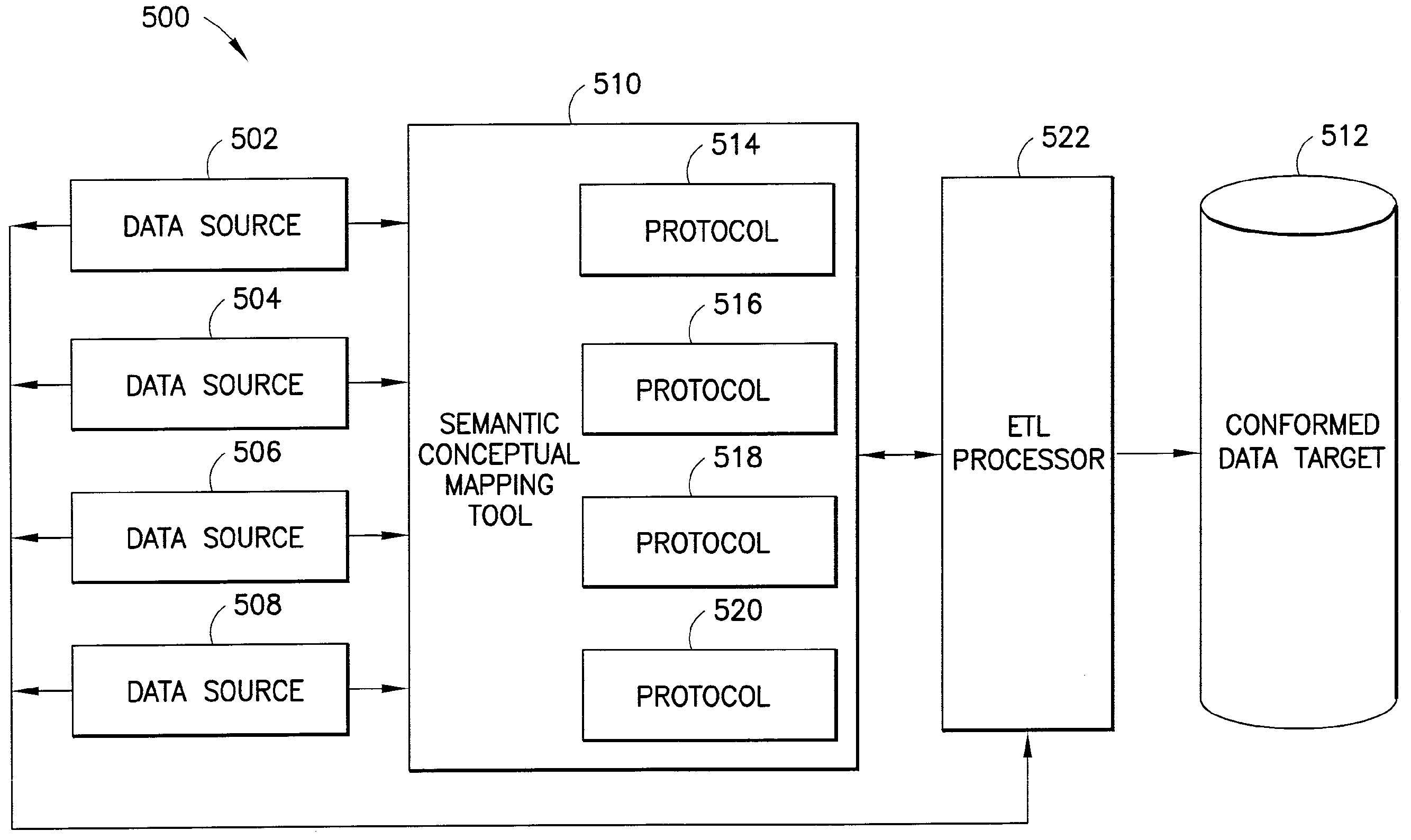System and Method for Semantic Normalization of Healthcare Data to Support Derivation Conformed Dimensions to Support Static and Aggregate Valuation Across Heterogeneous Data Sources
a semantic normalization and data technology, applied in the field of data processing system, can solve the problems of slow research, large cost, and inability to meet the needs of healthcare workers, and achieve the effects of reducing the number of patients
- Summary
- Abstract
- Description
- Claims
- Application Information
AI Technical Summary
Benefits of technology
Problems solved by technology
Method used
Image
Examples
Embodiment Construction
[0030]This system, method, and program product of our invention uses cascaded asymmetric association tables and semantic search to translate heterogeneously coded medical and other data into conformal dimensions that can be used to derive denominator files of combinations of disease states, treatments events, demographic characteristics and temporal conditions. This data can then be queried through various mechanisms including COTS tools, statistical tools, natural language etc. It allows the aggregate contents of the underlying heterogeneous data based on a mapping of the coded medical and demographic conditions without allowing unauthorized access to private data in the tables. This invention is capable of handling text data and discrete data and supporting both discrete (ex. SQL) and semantic queries to build the aggregates.
[0031]With reference now to the figures and in particular with reference to FIGS. 1-2, exemplary diagrams of data processing environments are provided, in whi...
PUM
 Login to View More
Login to View More Abstract
Description
Claims
Application Information
 Login to View More
Login to View More - R&D
- Intellectual Property
- Life Sciences
- Materials
- Tech Scout
- Unparalleled Data Quality
- Higher Quality Content
- 60% Fewer Hallucinations
Browse by: Latest US Patents, China's latest patents, Technical Efficacy Thesaurus, Application Domain, Technology Topic, Popular Technical Reports.
© 2025 PatSnap. All rights reserved.Legal|Privacy policy|Modern Slavery Act Transparency Statement|Sitemap|About US| Contact US: help@patsnap.com



